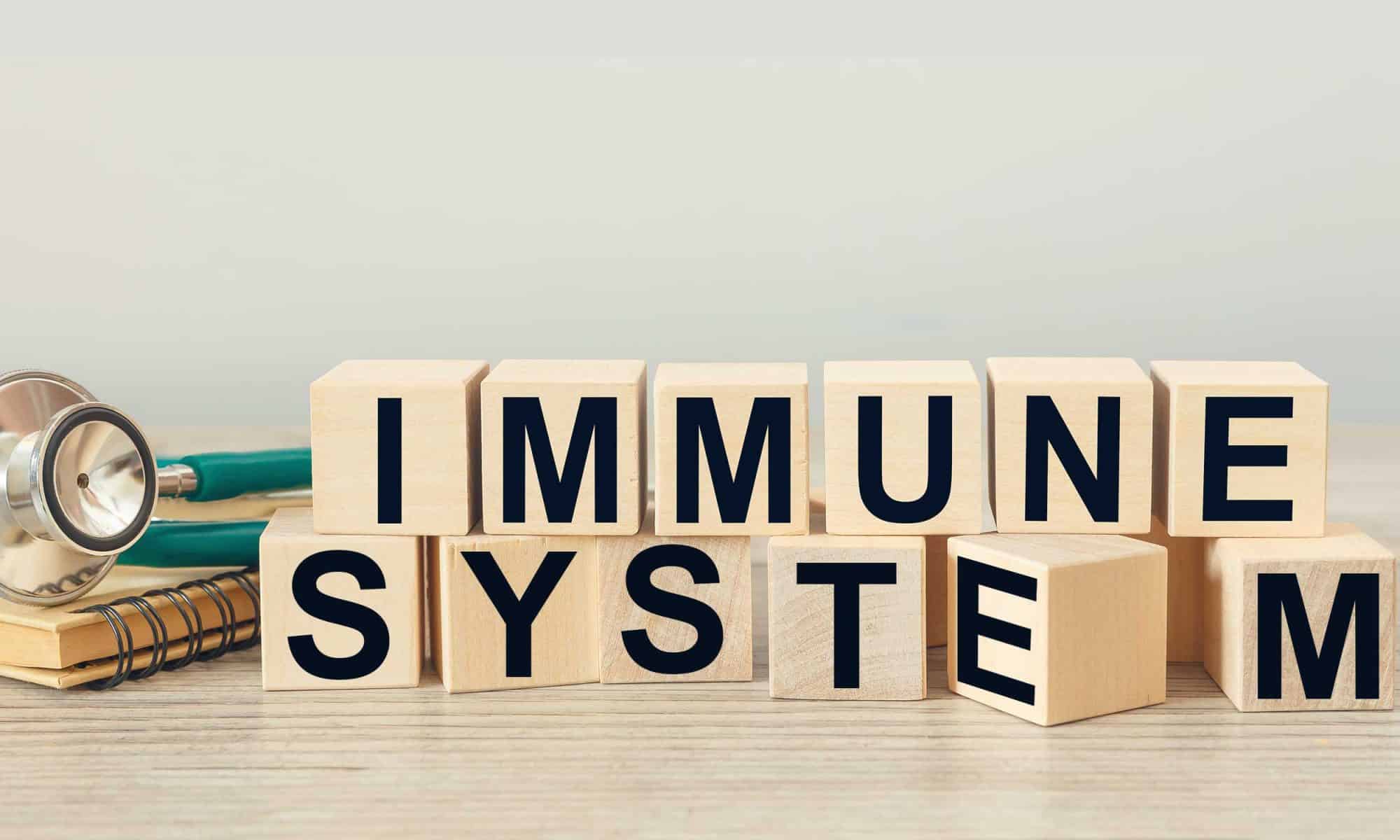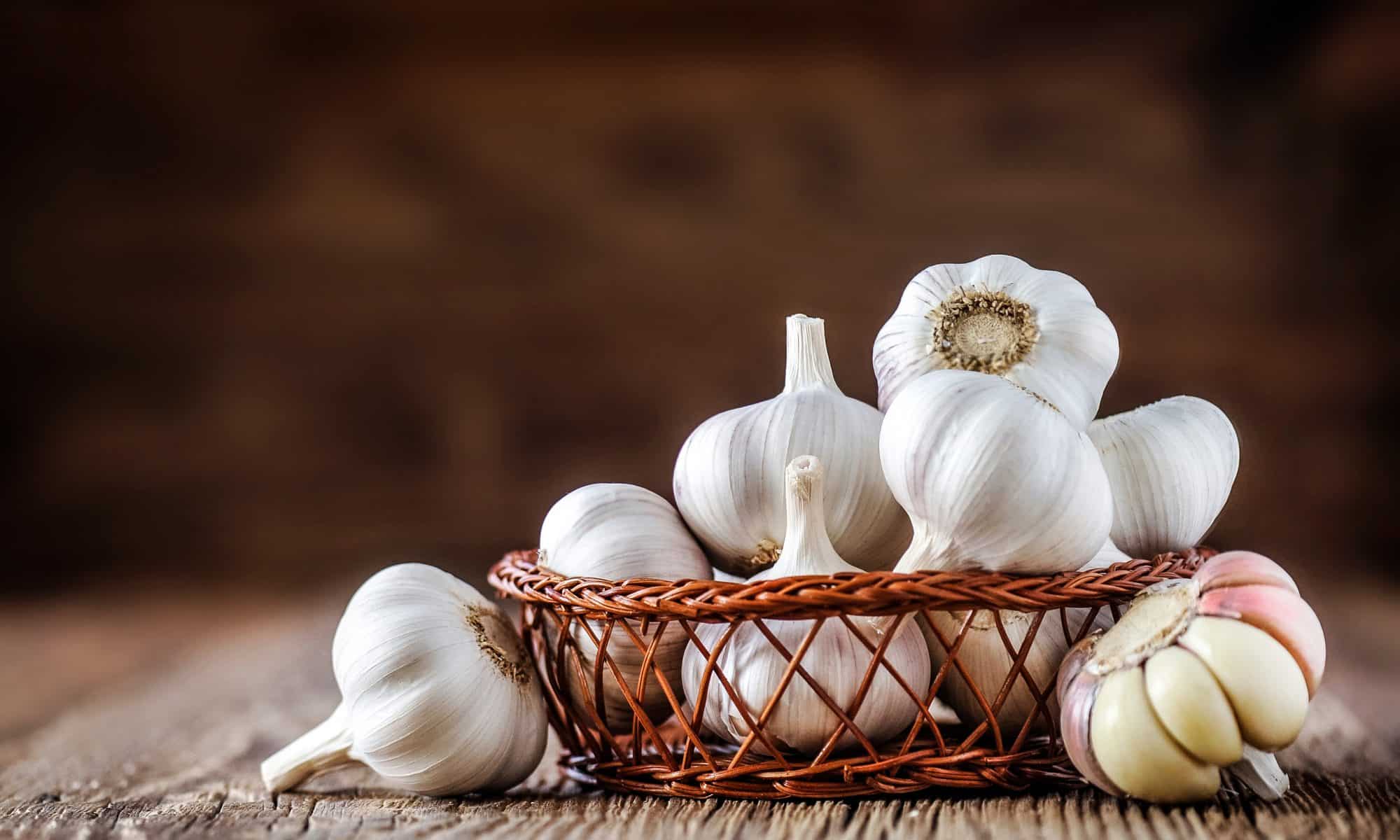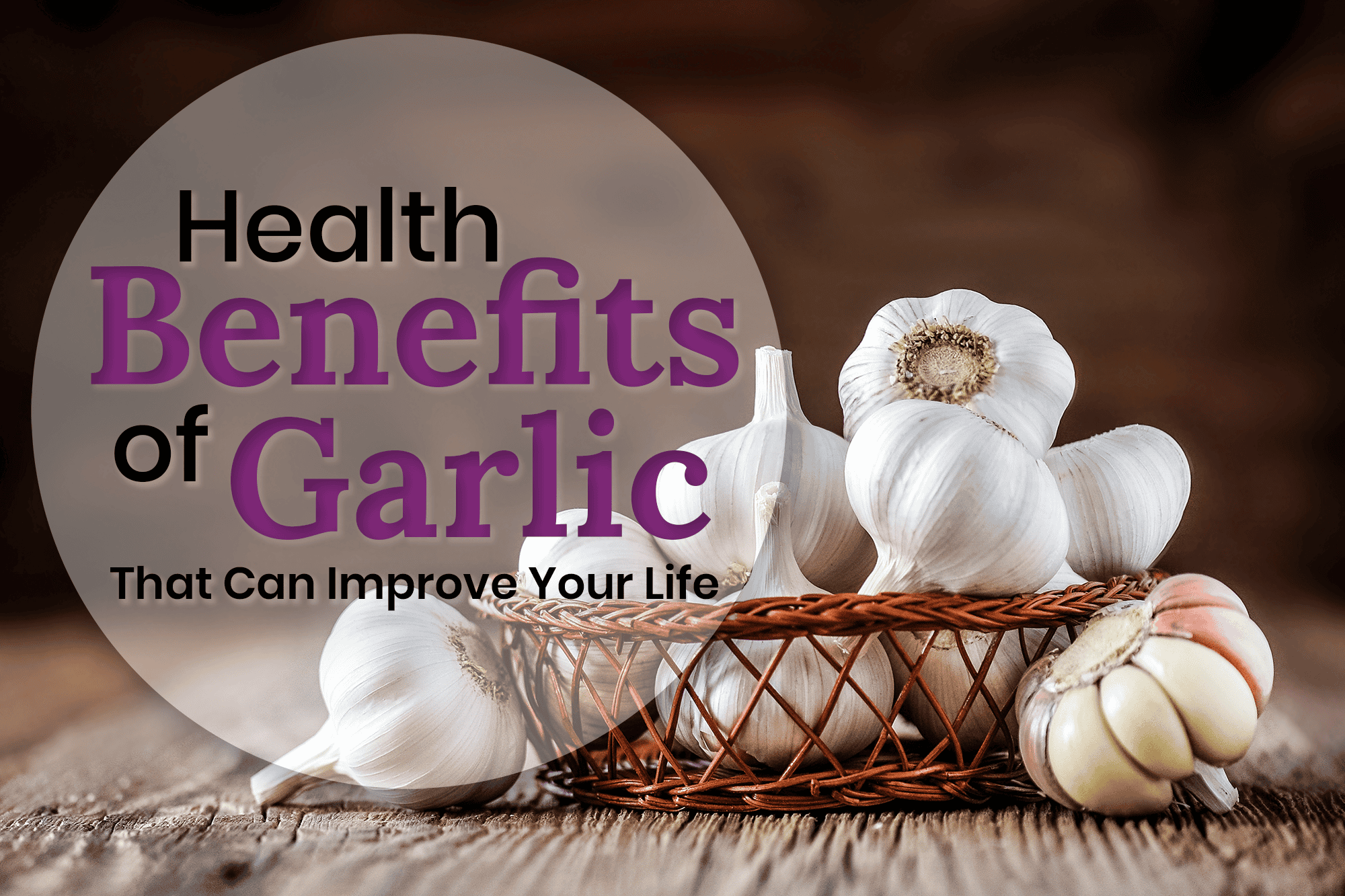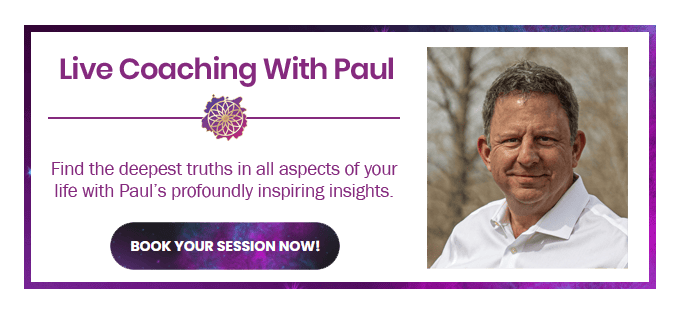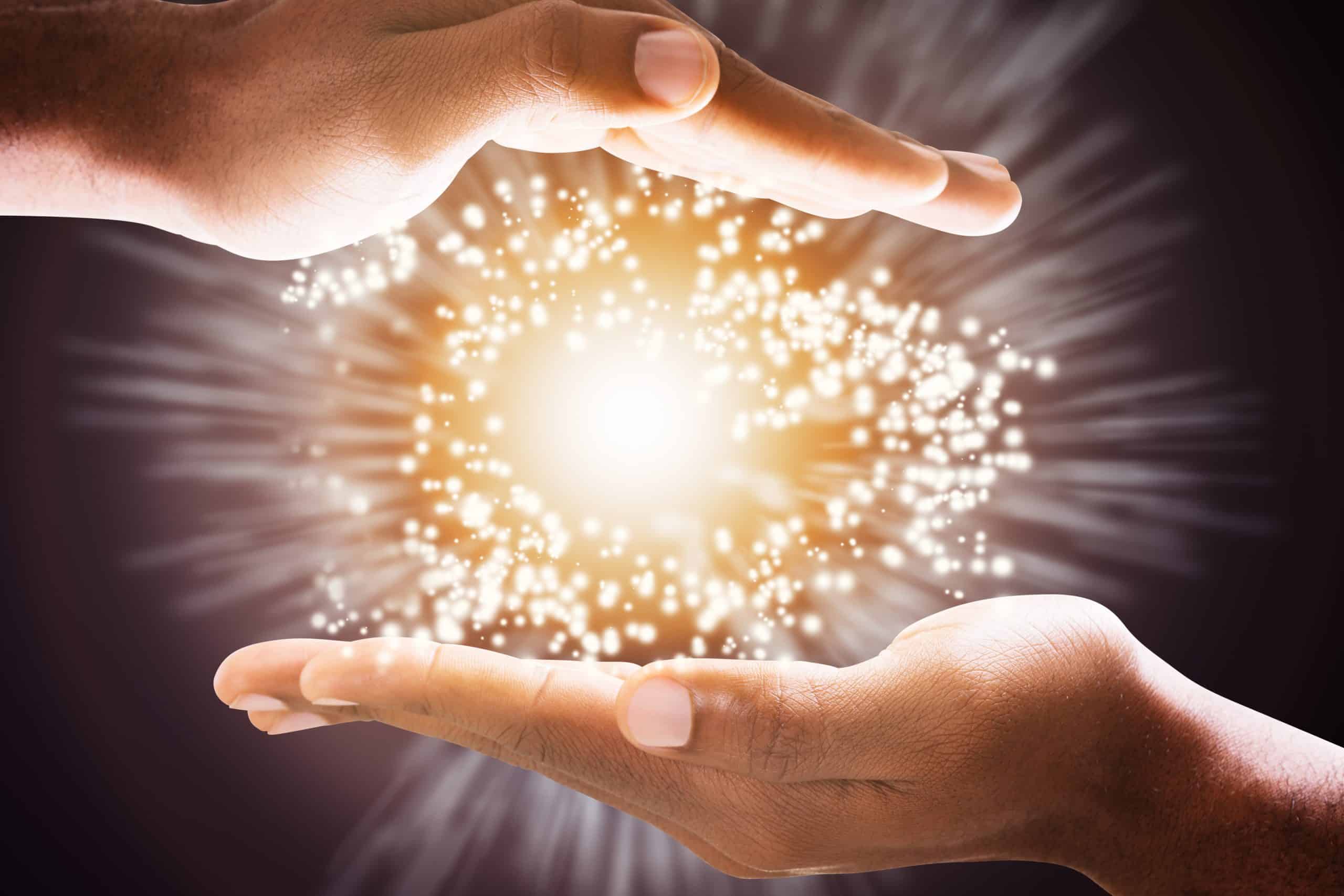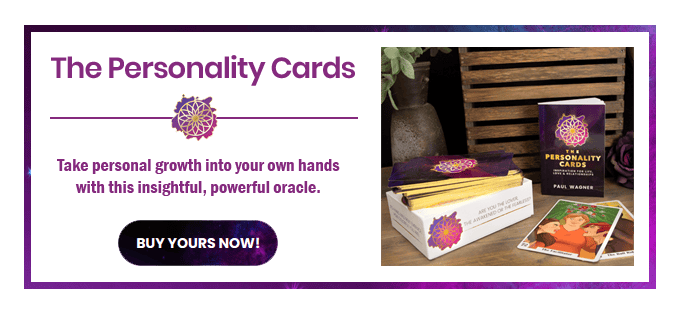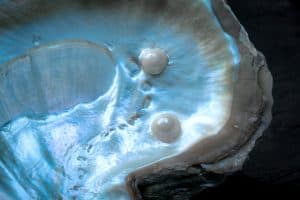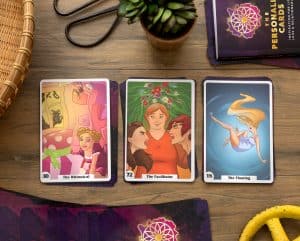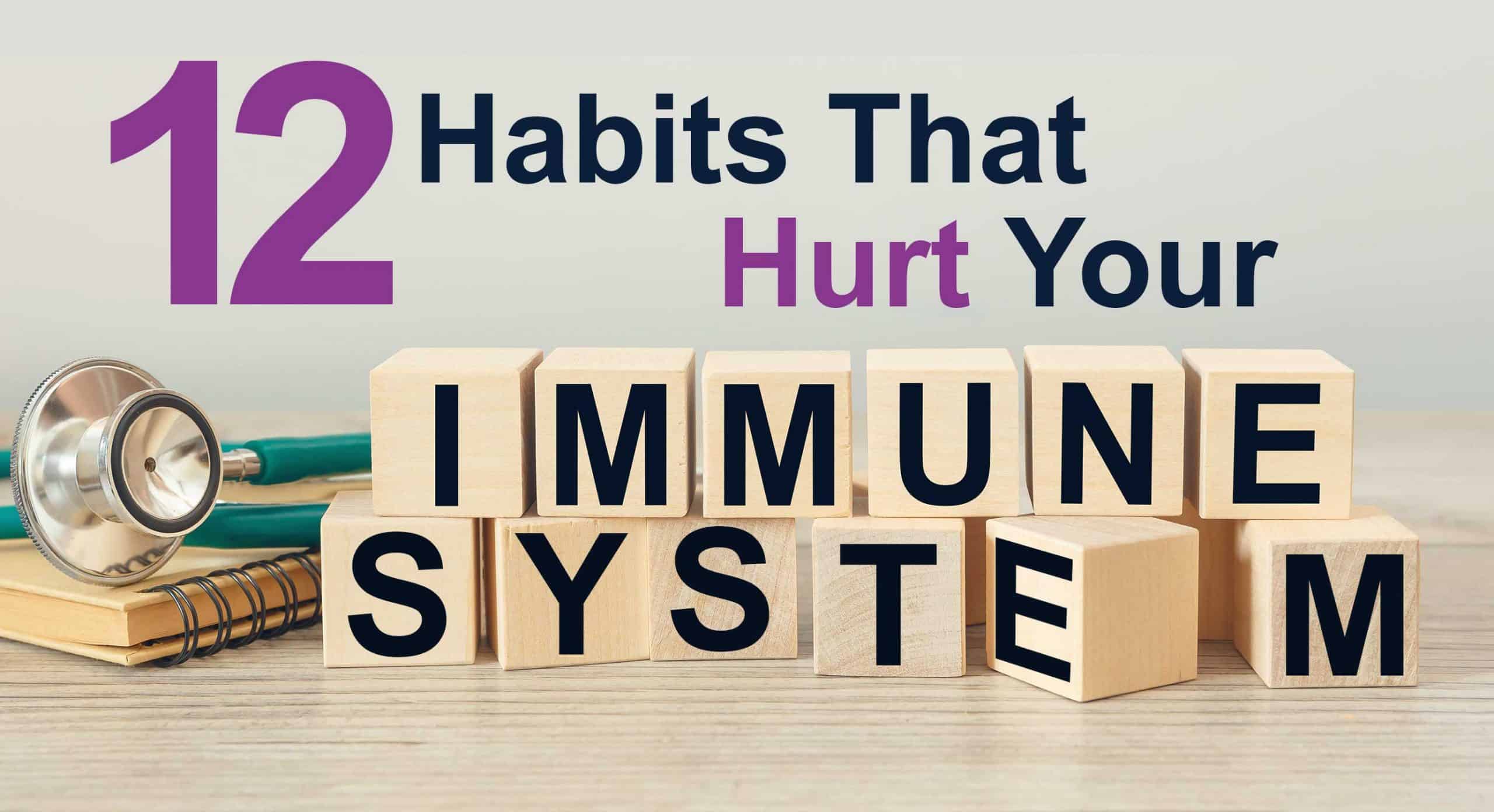
What does your immune system do?
Your immune system is an expansive, complicated network of organs, tissues, and cells that work together to fight harmful germs and other invasive antigens that can make you sick.
It’s your immune system’s job to protect you, but it can only do so effectively when it’s healthy. There are plenty of ways to protect against viruses and strengthen immune responses, such as introducing probiotics and antiviral herbs to your diet.
We can also cause damage and weaken the body’s defense if we expose our body to unhealthy life and eating habits. Being more mindful of how we treat our bodies can lead to less sickness and increased longevity.
So what are you currently doing that interferes with normal immune system activity? Here are some of the more common reasons our immune system might be out of balance.
1. Excessive Amounts of Sugar
We’ll start with an easy one. If you’re like me, you’ve probably heard “sugar is bad for you!” hundreds of times in your life. People are quick to point out that it can lead to diabetes and obesity, but the truth is that it can also reduce your immune system’s defense.
Leukocytes, or white blood cells, are the immune system cells that fight all kinds of foreign invaders like bacteria and viruses. So it’s scary to think that your immune system could be ineffective for any amount of time–but that’s exactly what a study conducted by Loma Linda University found could happen. They found that with as little at 100 grams of sugar (roughly equivalent to a liter of soda) your immune system could be 10-50% less effective at fighting off invaders. For up to 5 hours after ingesting it!
In that time it would be so much easier for a virus to slip by and get you sick. And to make matters worse, sugar competes with another vital component of your white blood cells–Vitamin C.
Vitamin C in these cells are necessary for the destruction of bacteria and viruses. However, it shares a similar chemical structure with sugar, so they end up competing for space in your immune cells. More sugar means less Vitamin C, leading to a crippled immune system.
2. Cigarettes & Marijuana
When your immune system isn’t working at its best, you’re more likely to get sick, suffer more severe symptoms, and have longer-lasting illnesses
Smoking can throw your immune system out of balance. Along with all of the other health risks associated with smoking, nicotine is a known immunosuppressive. Just like sugar, it inhibits your body’s ability to fight off microscopic pests. It also reduces antioxidant levels in your blood.
Marijuana alters immune cells found in your blood. The question around whether or not this change is beneficial or harmful is still being debated, but animal studies show marijuana suppresses inflammation and immune system function. If this is the same for humans, all of the issues surrounding poor immune health we discussed before could start to affect you.
3. Caffeine
You may be surprised to find out that when consumed in moderation, caffeine helps to regulate the immune system. It also contains antioxidants that help prevent disease and cancers.
But don’t go reaching for that guilt-free soda quite yet.
If you drink caffeine in excess, it will have an opposite, harmful effect on your immune system. How do you know what qualifies as “too much”? According to the Mayo Clinic, 400 mg is around the safe average for healthy adults. If you need a visual to help compare, they equate it to 4 cups of coffee, two energy drinks, or 10 cans of soda.
Straying from these levels can lead to major issues. High caffeine levels make your body release increased amounts of cortisol. This stress hormone is designed to give you physical energy to exert in times of high stress, so it dumps your body’s store of fat and sugar. Immune suppression, high blood pressure, higher cholesterol levels, skin breakouts, and weight gain.
Excessive caffeine can also cause anxiety, insomnia, stomachache, panic attacks, nervousness, and addiction.
If you feel like you can’t let go of your 12 daily coffee refills start by moving to drinks that naturally have less caffeine or set limits on how much you’re consuming. Try an herbal tea or another healthy alternative. You can also meditate if you’re feeling off or imbalanced to strengthen spiritual, emotional, and physical health.
4. Red Meat
As with several other items on this list, there is a nutritional benefit to eating moderate amounts of red meat. It provides a source of proteins, vitamins, and iron. The issue arises when you eat too much of it, and over a long period of time.
Red meat has been linked to increasing cancer growth for as long as most of us probably remember. The cause is thought to be a sugar molecule found in lamb, beef, and pork skin called Neu5Gc. It isn’t produced by your body naturally, but it’s found in cancerous tissues. Red meat has incredibly high levels of the molecule while poultry, fish, fruits, and vegetables didn’t have any.
Neu5Gc sparks a reaction from the immune system when consumed and it sends antibodies to get rid of the foreign invader. The inflammation that results from this response, if chronic, contributes to cancerous tumor growth. An animal study proved that the mice receiving Neu5Gc developed 5 times as many tumors.
5. Not Drinking Enough Water
Drinking water flushes toxins and waste materials like sugar and salt. Otherwise the body has trouble eliminating the debris and it starts to compound, making you more susceptible to infection and sickness.
Being dehydrated reduces energy levels too. Without energy you’re more likely to skip important exercise and experience a sluggish immune system.
Drink more water! It’s easy to accomplish and you can set reminders throughout the day if you’re worried you’ll forget. Your body will thank you and you’ll feel so much better.
6. Lack of Electrolytes
We routinely get all the electrolytes we need from the food and drink we consume. Which is great because these slightly charged particles play a key role in quite a few functions. They help maintain hydration levels and carry electrical impulses all around the body.
If your electrolytes get out of balance, you can experience a whole slew of nasty effects like:
- Weakened muscles
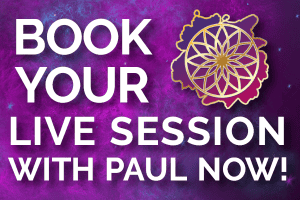
- Muscle spasms, cramps, or twitches
- Joint and bone disorders
- Insomnia or other sleep disorders
- Incorrect hydration levels
- Less effective immune system
- Anxiety
- Fatigue
An electrolyte imbalance could be a sign of underlying medical conditions, but we also need a boost after strenuous exercise or prolonged heat exposure. Our digestive systems slow as we age, which can make it more difficult for our bodies to maintain a proper balance.
Maple, coconut, and birch water are naturally high in electrolytes, making them a healthy way to replace the missing molecules. Especially for long-term electrolyte replacement. Don’t rely too heavily on other common solutions like sports drinks because they usually contain a ton of unhealthy sugar.
7. Skipping the Workout
Regular exercise is a common health recommendation, tied to a wide range of benefits throughout the body. Heart health, lower blood pressure, weight loss, and immune system defense are just a few.
A sedentary lifestyle interrupts this natural flow and hurts you as a result. Working out improves circulation so immune cells can travel faster and work more efficiently. If you’re sitting down for most of the day, every day, your circulation could suffer, resulting in blood having a more difficult time maneuvering around the body.
You don’t have to throw a bunch of money at a gym membership you’ll never use. Home workouts are easy to find online and include almost any topic you can think of, from yoga to dance routines. Take a stroll through a nearby park or even your neighborhood if you really don’t like exercising.
8. Sleeping Too Little
Everyone requires different amounts of sleep to allow their body to fully recover from the day before, but 6 to 8 hours is typically recommended. Any less than this, especially over a long time, can cause negative reactions in your body.
Sleeping too little increases the chances of getting sick and the risk of chronic diseases. It’s believed this is directly connected to the fact that not sleeping interrupts immune system functions.
Short-term sleep deprivation makes you more likely to catch a cold or flu, increases your chance of infection, and can even slow the speed of healing. If it becomes a long-term problem, people can also find themselves at risk of diabetes, cardiovascular disease, and depression.
Despite what some people believe, your body can’t just “get used to” surviving on little to no sleep. In fact the continued inflammation caused from little sleep can create more issues for long-term health.
9. Skipping the Naps
Who put the idea in people’s minds that naps are only for kindergarten? So many adults find themselves fighting off the urge to nap during the day, even after a night of poor sleep. But it’s important to listen to the signals your body is sending–it needs that sleep to perform efficiently and keep you healthy.
A short nap is a healthy way to make up for that crucial sleep you missed the night before. One study compared the levels of cytokines (inflammatory molecules) and norepinephrine (a stress hormone) between two groups. Both were limited to only two hours of sleep on the night of the study, but only one group was allowed to take 2 thirty minute naps the following day.
Both levels are typically higher after a poor night’s sleep, but the nappers tested normal when the cytokines and norepinephrine levels as if they never lost that crucial sleep.
10. Vitamin Deficiency
Proper vitamin and nutrient levels are absolutely crucial for overall health and an efficient immune system. Nutrients like iron, folic acid, zinc, copper, selenium, and Vitamins A, B6, C, D, and E are all vital to give your body a proper defense against infections and viruses.
A single deficiency is enough to throw off your immune system and change its response. So the risk of viral, bacterial, and infections increases for those with a poor diet and no additional supplements.
Fresh, quality food is the best way to ensure ongoing immune health. Frozen fruits and veggies are a great substitute if there’s no fresh produce near you or you’re tired of forgetting things in the back of the fridge until they’ve rotted. Companies freeze them at their peak ripeness so they retain nearly the same amount of nutrients.
Multivitamins and supplements shouldn’t be used as a full substitute for a healthy diet, but they’re great if you’re unable to frequently eat meals that contain the nutrients your body needs. It’s important to remember that taking a supplement once isn’t going to do anything to change your vitamin levels. It’s something you have to stick with for a while to see results, just like you need to maintain a healthy diet over a period of time to notice a difference.
Stay away from megadose supplements. They contain far more than the recommended dietary allowances which can inhibit immune system efficiency and cause other harmful side effects.
11. 5G Technology
Some scientists say that we need stronger exposure limits in place to protect us from the effects of radio frequency radiation (RFR). Over 500 studies have found negative biological and health effects caused by RFR exposure and long-term radiation is also possibly linked to cancer.
5G technology will be combining the older technology of microwaves with the new tech, millimeter waves. The amount of cell antennas required to maintain the service will expose people to this new millimeter wave radiation for the first time.
There is still research being done to find the extent of risk when it comes to 5G technology, but limiting exposure will help you protect yourself and your immune system from potential harm.
12. Drinking Ice Cold Water
It’s important to stay hydrated by drinking plenty of water, but how we consume it can be just as important.
Icy cold water may sound delicious, but it can slow your body’s digestion and hinder its ability to absorb nutrients. As your body tries to correct this imbalance, you can experience water loss that leads to dehydration. Chilled water too soon after finishing a meal can solidify fats from the food and make it difficult for you to break down the unwanted substances. This extra energy being exerted may have a negative impact on your immune system and make you more open to sickness.
Ancient Chinese medicine believes that mixing cold water with warm food creates an imbalance in our bodies. To combat this, room temperature water or hot beverages like tea often accompany meals.
If you’re feeling under the weather, warm drinks are also good at fighting congestion by making it easier to breathe. Cold water, on the other hand, has been found to thicken nasal mucous and makes the congestion feel worse.
You should also skip the cold water if you suffer from migraines or achalasia, as it can trigger or worsen symptoms you’re already suffering from.
Summary
These are just a few simple changes that can make a world of difference in your life. No one likes getting sick or feeling run down, and by avoiding bad habits and unhealthy substances you improve your ability to fight off viruses and bacteria.
It’s wonderful to work on your physical health, but make sure not to neglect other aspects of yourself like emotional, mental, and spiritual wellness. Finding the perfect balance can be difficult at first, but over time you’ll find that as you start to feel better these things will come more naturally to you.
Good luck on your journey to a healthier, happier you!

